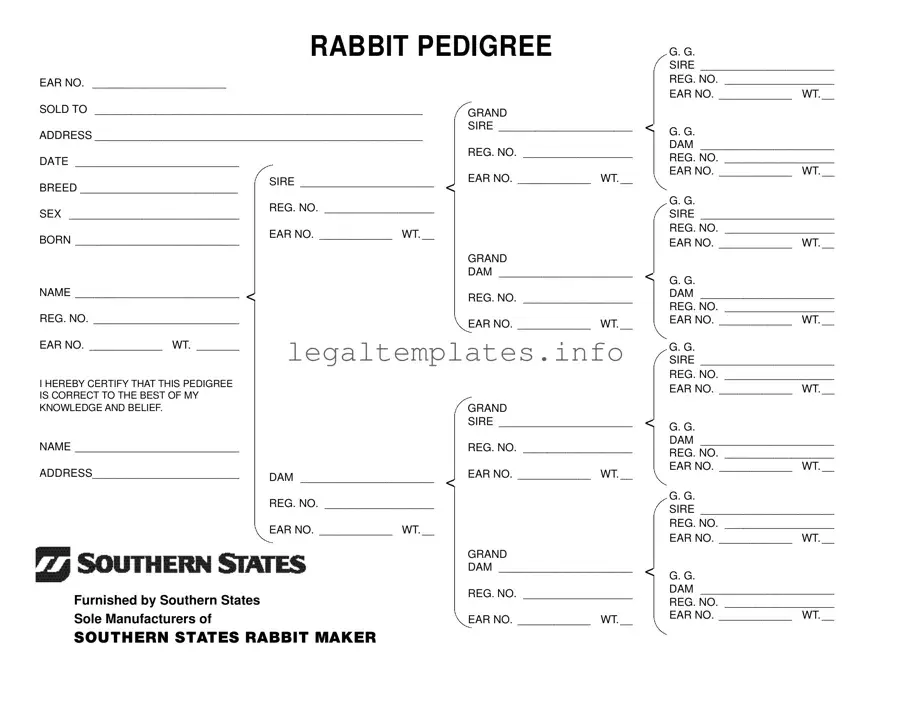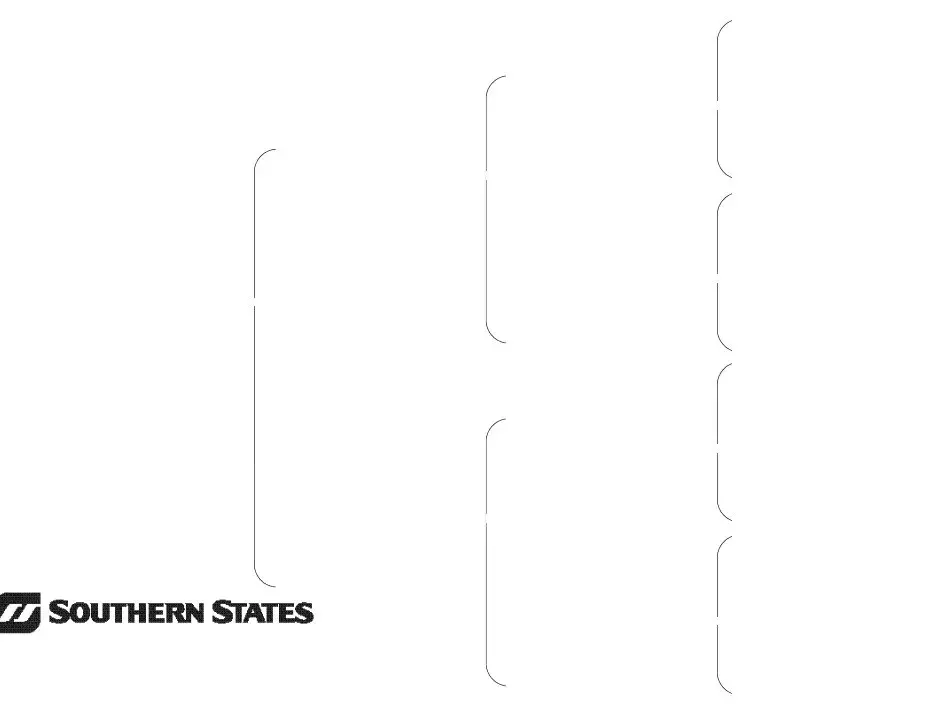What is a Rabbit Pedigree Form?
A Rabbit Pedigree Form is a document that records the lineage or ancestry of a rabbit, showing its parents, grandparents, and great-grandparents. It includes information like names, registration numbers, ear numbers, and weights.
Why is it important to have a Rabbit Pedigree?
Having a pedigree is crucial for breeders and owners who wish to track the lineage of their rabbits, ensuring they are breeding animals with desirable traits. It also provides proof of the rabbit's background, which is important for shows, sales, and breeding records.
What information is required to fill out a Rabbit Pedigree Form?
To complete the form, you'll need details about the rabbit, including its name, breed, sex, date of birth, and ear number. You also need similar information about its ancestors - sire (father), dam (mother), grandsires, granddams, great-grandsires, and great-granddams.
How can I obtain a registration number for my rabbit?
Registration numbers are assigned to rabbits by breed associations or clubs when the rabbit meets specific breed standards and has been inspected by a certified registrar. You'll need to contact an association affiliated with your rabbit's breed to get a registration number.
Is it possible to register a rabbit without a pedigree?
Typically, rabbits need a verifiable pedigree to be registered, as the registration process involves tracing the rabbit's lineage and verifying it meets the breed's standards. However, some organizations may have provisions for rabbits without pedigrees under certain circumstances.
Can I sell a rabbit without a pedigree?
Yes, rabbits can be sold without pedigrees, but having one often increases their value, especially if sold for breeding or show purposes. A pedigree provides proof of the rabbit's lineage and adherence to breed standards.
How do I interpret ear numbers and registration numbers on the form?
Ear numbers are unique identifiers tattooed or otherwise marked in a rabbit's ear for identification. Registration numbers are assigned by breed associations when a rabbit is registered and meets certain breed standards. These numbers help track and verify the rabbit's identity and lineage.
Why do weights matter on a Rabbit Pedigree Form?
Weights are recorded to monitor the health and development of a rabbit and ensure it meets the breed standards for size. This information can be crucial for breeders selecting for specific traits or individuals tracking the growth of their rabbits.
How long does it take to process a Rabbit Pedigree?
The processing time for a Rabbit Pedigree can vary depending on the organization or club handling the pedigree. It's best to inquire directly with the issuing body for the most accurate timeframe.
Where can I get a Rabbit Pedigree Form?
Rabbit Pedigree Forms can be obtained from rabbit breeders’ associations, clubs dedicated to specific rabbit breeds, or online resources that offer templates for recording rabbit ancestry and lineage.

